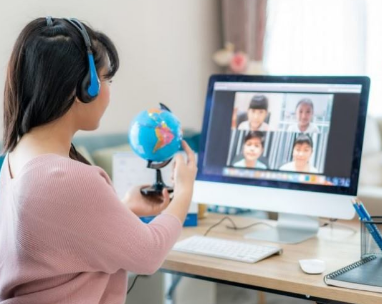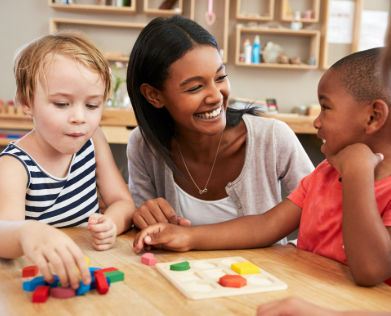Family life is full of beautiful connections, shared laughter, and meaningful traditions. Yet, in today’s world of busy schedules, constant notifications, and daily responsibilities, it is easy to feel that calmness within family time is slipping away. Creating relaxed family moments can feel like a challenge when everyone is moving in different directions. One gentle way to nurture peace and togetherness is through meditation. Meditation does not need to be complicated, nor does it need to take up long hours. With a little intention, it can become a welcoming practice that helps the entire family slow down, breathe, and enjoy one another’s company.
Meditation is often thought of as something done alone in quiet solitude. While personal meditation is certainly valuable, practicing it together as a family brings a unique layer of warmth. It is less about perfection and more about presence. Imagine a few minutes in the evening when everyone comes together to sit comfortably, close their eyes, and breathe deeply. The simple act of pausing in unison can release tension and make space for appreciation. Children may giggle the first few times, parents may feel a little distracted, but over time, these shared practices turn into special rituals that add softness to family life.
One of the greatest gifts of meditation for families is the way it invites everyone to slow down. The modern pace of life often encourages rushing from one task to the next. Parents juggle work, household responsibilities, and schedules, while children manage school, hobbies, and friendships. A shared meditation practice serves as a pause button, allowing each family member to gently reset. Instead of carrying the stress of the day into family time, meditation clears space for ease. When the mind is quieter, smiles come more naturally, and conversations flow with more patience and kindness.
Meditation also helps strengthen emotional bonds. When practiced together, it encourages listening and empathy. Many families find that guided meditations with themes of gratitude, kindness, or compassion spark meaningful reflections. For example, after a short practice, everyone might share something they are thankful for. These discussions do not need to be long or formal; even a single sentence can deepen understanding and connection. Over time, children learn that family is a place where they can feel heard and supported, while parents find comfort in knowing their presence makes a difference.
The atmosphere in the home also benefits from meditation. Families who make meditation a gentle routine often notice a calmer environment overall. Arguments may still happen, as they naturally do in every household, but they tend to resolve more easily when everyone is used to pausing and breathing before reacting. The practice of mindfulness reduces reactivity, which means less shouting and more thoughtful responses. This shift creates a home that feels more like a sanctuary, where each member can relax and recharge.
Children, in particular, gain valuable skills when they are introduced to meditation early. Many parents observe that meditation helps their children manage emotions, focus better, and respond more calmly to challenges. For instance, a child who feels nervous about a test or a performance may find comfort in a simple breathing exercise learned during family meditation. The lesson that calmness can be found within themselves is one that will serve them for a lifetime. Just as importantly, seeing their parents practice meditation shows children that self-care and inner peace are worth nurturing.
Creating relaxed family moments with meditation does not require special equipment or long stretches of time. It can begin with just a few minutes a day. Families might choose to gather in the living room before bedtime, sit on cushions, and follow a gentle guided meditation. Some prefer to keep it unstructured by simply closing their eyes, placing a hand on their heart, and taking deep breaths together. The key is consistency rather than perfection. A short practice each day, even if only for five minutes, can have a lasting impact.
For families who enjoy creativity, meditation can be combined with lighthearted activities. After a quiet breathing practice, children may enjoy drawing a picture of something they felt or imagined. Parents might introduce a short story that emphasizes peace, kindness, or appreciation. Music can also enhance the experience. Playing soft instrumental sounds while meditating sets a soothing tone and signals to the mind that it is time to relax. These small touches make the practice more inviting, especially for younger participants who may need variety to stay engaged.
Another way to weave meditation into family life is by taking it outdoors. Nature has a calming effect that complements meditation beautifully. Families can sit together in a park or garden, close their eyes, and listen to the sounds of birds, leaves, or flowing water. Breathing in fresh air while sharing silence under the sky deepens the sense of togetherness. These outdoor meditations often create memories that children carry fondly into adulthood, reminding them that peace is always close at hand.
Even busy mornings can benefit from a brief family meditation. Before everyone rushes off to school or work, a minute of shared breathing can set a positive tone for the day. Parents may encourage their children to think of one intention, such as being kind to a friend or staying focused in class. Likewise, parents can set an intention for patience and positivity at work. This shared practice makes mornings feel less hurried and more connected.
As families grow and change, meditation can evolve with them. What works for young children may differ from what resonates with teenagers or adults, but the underlying principle of presence remains the same. Some families eventually create longer practices, while others maintain short daily check-ins. There is no right or wrong approach, as long as the intention is to nurture calmness and connection.
The beauty of meditation is that it reminds families to value presence over perfection. Life will always bring challenges, unexpected turns, and moments of stress. However, when families cultivate a habit of pausing together, they develop resilience and gentleness. Instead of letting stress dominate, they return to their breath, to one another, and to the peace that lies within shared silence.
In the end, meditation is not about forcing stillness or achieving a flawless practice. It is about creating little islands of calm in the sea of daily life. For families, these moments become treasures. They are times when laughter is easier, patience is stronger, and love feels even more alive. Whether practiced for one minute or twenty, meditation helps turn ordinary family moments into relaxed, meaningful experiences.
By welcoming meditation into family life, households discover a rhythm of calm that supports both individual well-being and collective harmony. The practice becomes more than just a technique; it becomes a gentle reminder that home is not only a place of shelter but also a space of peace. Through meditation, families can step away from the rush of the outside world and step into the joy of being together, fully present, and deeply relaxed.






